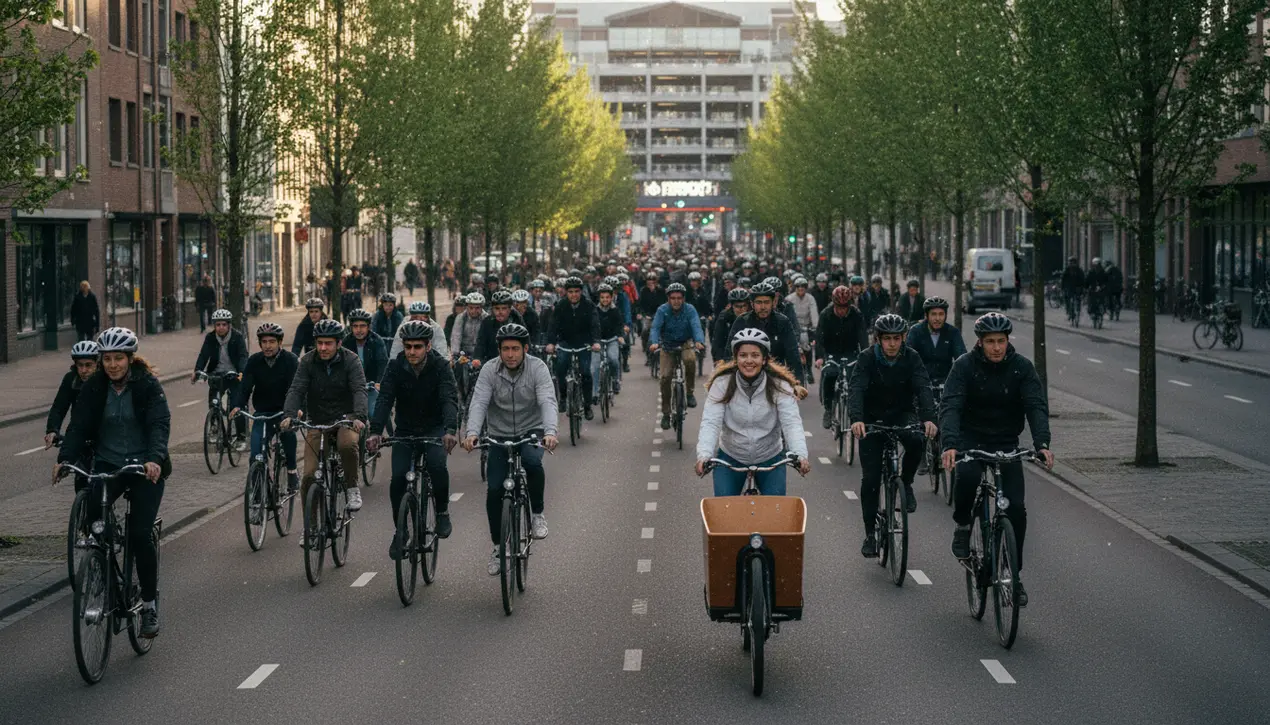
Otherauto & mobility
The 30 most bike-friendly cities in the world
RA
Rachel Adams
2 hours ago7 min read1 comments
A quiet revolution is reshaping the arteries of our cities, one that trades the roar of combustion engines for the gentle whir of bicycle chains. In a comprehensive new analysis by the urban design consultancy Copenhagenize, the world’s 100 leading cities were ranked on their commitment to this two-wheeled transformation, revealing a profound shift towards slower, safer, and healthier urban travel.The report, the most detailed of its kind, scrutinized everything from the proliferation of protected bike lanes to the promotion of cargo bikes for deliveries and the integration of cycling education into school curricula. The findings paint a compelling picture: European cities, with their strong pro-bike policies, dominate the top tier, having systematically lowered speed limits, added separated infrastructure, and created bicycle streets where cyclists take precedence over cars.Yet, the global momentum is unmistakable, from the 'bike trains' of hundreds of riders making commuting safer in Nairobi, Kenya, to Minneapolis, where former car lanes have been boldly converted into two-way bike paths. This isn't merely about recreation; it's a fundamental re-evaluation of public space and mobility.As Clotilde Imbert, director of Copenhagenize, asserts, any hesitant politician need only 'look at this report and see that everywhere in the world, other cities are investing in cycling, and they are getting back all the benefits from active mobility. ' The poster child for this rapid change is Paris, where boulevards once choked with traffic at rush hour are now filled with thousands of cyclists, newly planted trees, and notably cleaner air—a testament that such massive urban transformation can, indeed, happen fast when there is political will.Topping the list is Utrecht, Netherlands, where nearly a third of all trips occur by bicycle. The city continues its aggressive reclamation of space from cars, removing parking spots and car lanes to make room for more bike lanes and greenery, and is even constructing a new car-free neighborhood designed for 12,000 residents.Its amenities, like the world’s largest bike parking garage and a program offering refurbished bikes to low-income residents for €30, underscore a commitment to equitable access. Close behind, Copenhagen has protected bike lanes on over half of its streets, with 29% of all trips and nearly half of all commutes made on two wheels.The Danish capital’s residents collectively ride a staggering 2. 75 million kilometers on a typical weekday.The list continues with Ghent, Belgium, which has seen its bike trip share leap from 22% to over a third in a decade, and the ever-iconic Amsterdam, which maintains its status with 560 kilometers of protected lanes and a city-wide 30 km/h speed limit. The ecological and public health implications of this shift are immense.Each cyclist represents a reduction in carbon emissions, less air and noise pollution, and a more active, healthier populace. The data from these cities provides a robust counter-argument to car-centric planning, demonstrating that when you build safe, connected, and convenient infrastructure, people will use it. From Helsinki clearing snow from 150 kilometers of bike lanes to support winter cycling to Montreal pioneering North America’s first bicycle streets, the blueprint for a sustainable urban future is being written not in policy papers alone, but on the paved paths and reclaimed streets of these thirty leading cities.
#bike-friendly cities
#urban cycling
#Copenhagenize index
#sustainable transport
#infrastructure
#active mobility
#featured
Stay Informed. Act Smarter.
Get weekly highlights, major headlines, and expert insights — then put your knowledge to work in our live prediction markets.
Comments
Loading comments...
© 2025 Outpoll Service LTD. All rights reserved.